Why don't people even have a chance to tame this cat? 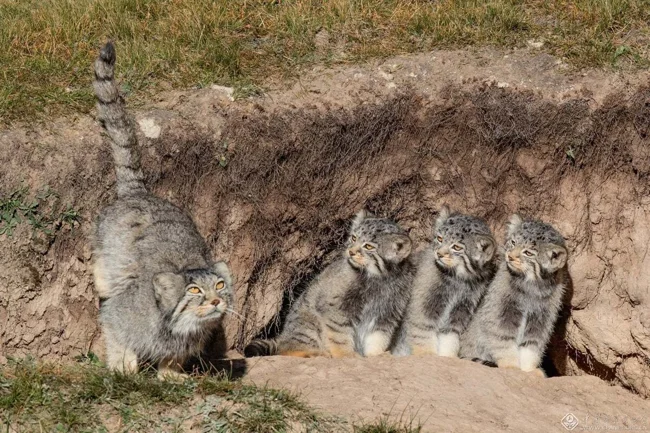
Let's start counting Pallas's cats.
There are many things in the world I won't be able to try. But only one thing truly breaks my heart: I will never be able to live under the same roof with a Pallas's cat. We managed to domesticate cheetahs and find common ground with lions, but no matter how hard people tried to befriend these flat-faced fluffy creatures, the results were consistently zero. And I'm not sure even advanced genetic engineering can turn the tide. 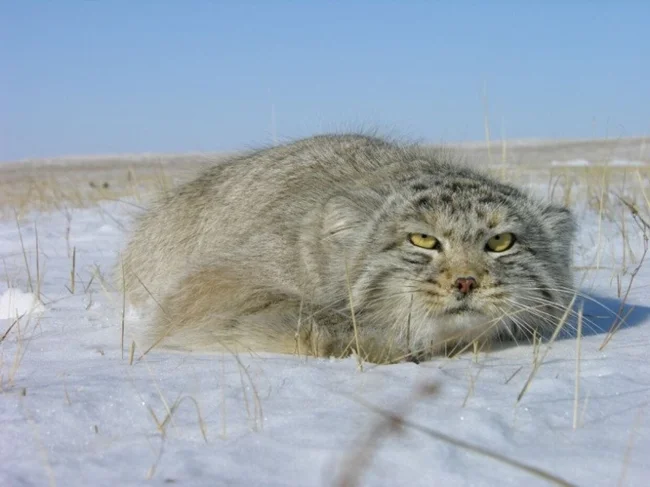
One more step and you'll get pepper in the face.
After all, the main reason Pallas's cats resist domestication so effectively is their extreme asociality. Under ideal conditions, Pallas's cats see each other exactly once a year—when they're breeding. And while their hunting grounds, like those of other small cats, may overlap, the animals almost never see each other, as a single cat's territory can reach up to 200 square kilometers! Just imagine the size of their personal space, which must not be invaded! 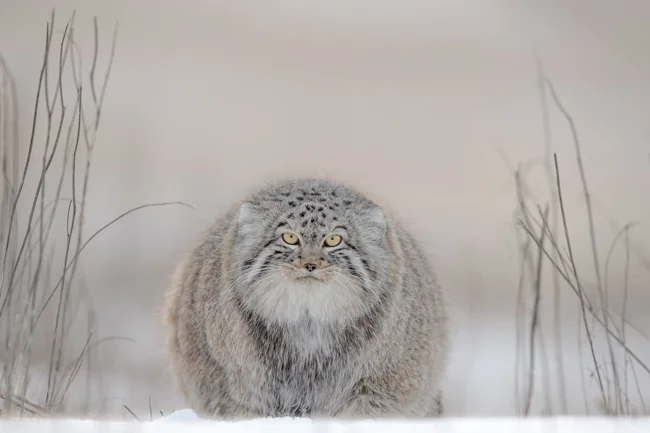
I stand here for this steppe! The steppe is everything to me, and I am everything to the steppe! Anyone who knows me knows!
However, contrary to popular belief, you can pet a Pallas's cat without losing a limb. To do this, you simply need to be close to it from puppyhood, feed it, and care for it, never betraying its trust. And in this case, you MAYBE will grow in its eyes to the level of furniture it can tolerate. Even caretakers who have cared for unfriendly cats for years can't melt their icy hearts. But don't expect any attention or affection in return. 
Mom, please don't kill that guy, he just looked at you. 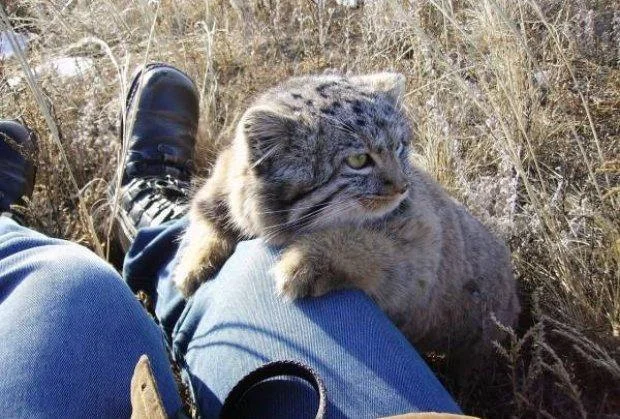
Comfortable bar counter, heated!
Dedicated loners are physiologically incapable of feeling affection for anyone but their own offspring. In the cramped conditions of a zoo, they almost completely ignore each other, and most even stop leaving scent marks—the only consistent way Pallas's cats communicate with each other. 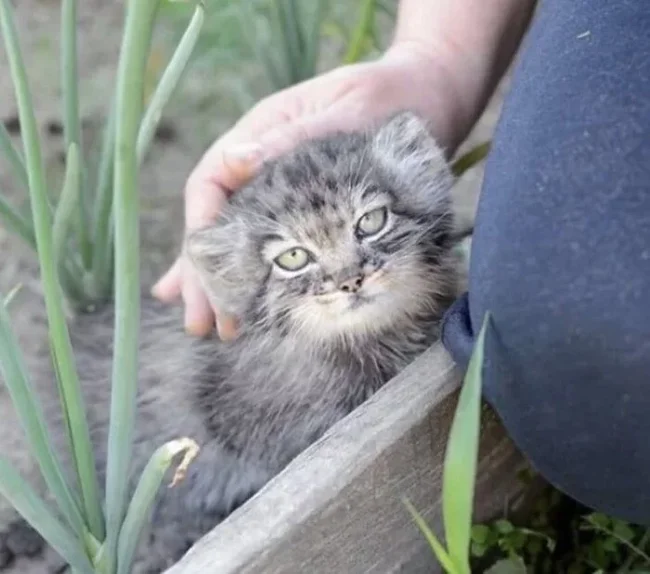
In fact, petting a Pallas's cat is easy, but only when it's still a young kitten.
Okay, let's say someone was found who managed to convince the Pallas's cat that they meant no harm. Let's say they're willing to live with the Pallas's cat as a neighbor, wandering around the apartment at dusk and falling asleep during the day. Will he be able to sleep under the same roof with an animal? The answer is no. 
The kind and gentle smile of a gentle domestic cat.
After all, a city apartment for a Pallas's cat is an overheated and noisy stone pit, causing nothing but claustrophobia. Its thick fur and thick fat allow it to survive temperatures down to -40 degrees Celsius. But even in the bitter cold of January, the apartment maintains a comfortable 20-25 degrees Celsius and the air is dry. Take a walk in a fur coat in the tropics and you'll understand how this child of the steppes feels in a human dwelling. And we're not even mentioning the impossibility of toilet training. Keeping a Pallas's cat in a cottage or country house is even more pointless. On the very first night, the cat will dart behind the fence and disappear into the night. Freedom and steppe marmots are more valuable to him than a cozy bed and cat food! 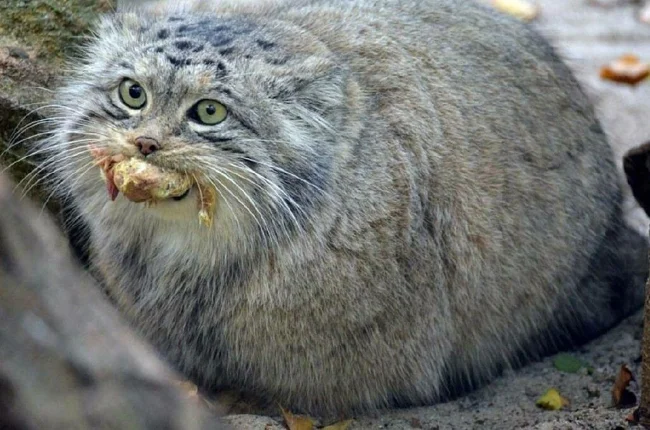
And it would be a good thing if he didn't kill all the poultry first.
Since taming a Pallas's cat is impossible, we can only consider the most radical option for domestication. What if we created a hybrid breed that combined the character of a domestic cat with the appearance of a Pallas's cat? At first glance, this sounds crazy, but humanity has already accomplished such felines: Savannah cats, Bengal cats, and Serengeti cats are all cats with the blood of two or even three cat species running through their veins. We have both the technology and experience that could help develop a stable breed of domestic Pallas's cats. But there's one "but": Pallas's cats do not interbreed with domestic cats. 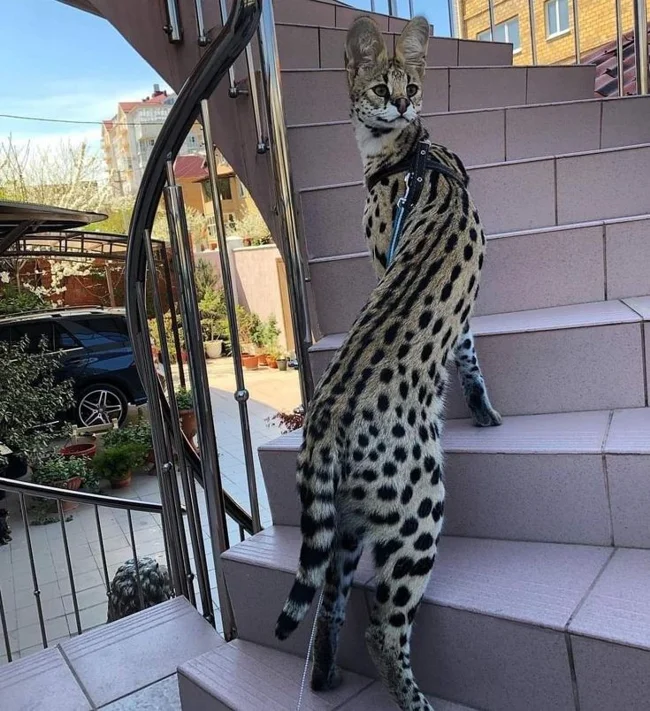
Savannah: a hybrid of a domestic cat and an African serval. These cats are typically less comatose...
Despite the same number of chromosomes and their evolutionary proximity, no cases of Pallas's cat hybridization have been recorded in the entire history of observation. Even genome studies of the steppe cats clearly show that their genotype is not contaminated by the genes of human pets. And yet, they have lived side by side for centuries! 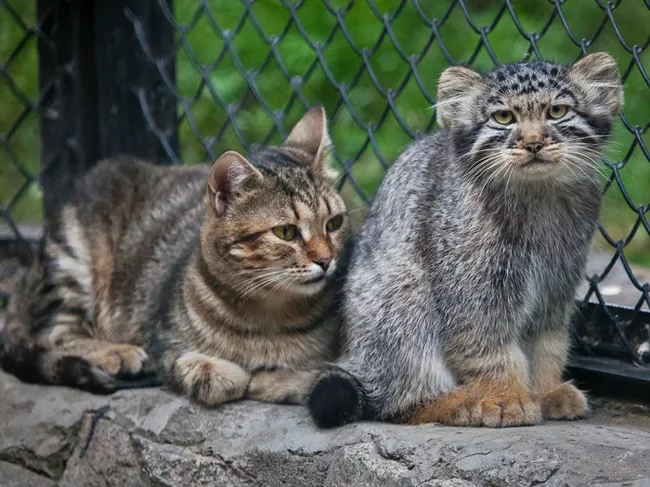
— Hey, neighbor, how are you? — Hey, neighbor, back off.
It's unclear whether genetic incompatibility is to blame, or whether the two cat species simply can't get along. However, the facts remain: domesticating Pallas's cats is currently impossible by any method known to man. Therefore, we should leave these cats alone. Let them continue to roam their steppes, still free from human influence. 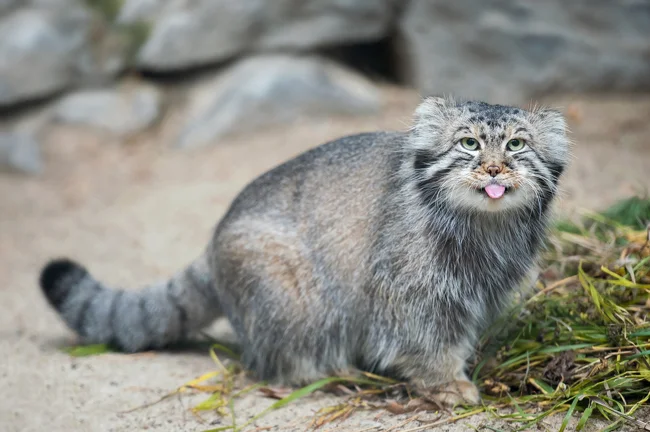
Free forever.
Add your comment
You might be interested in:






























